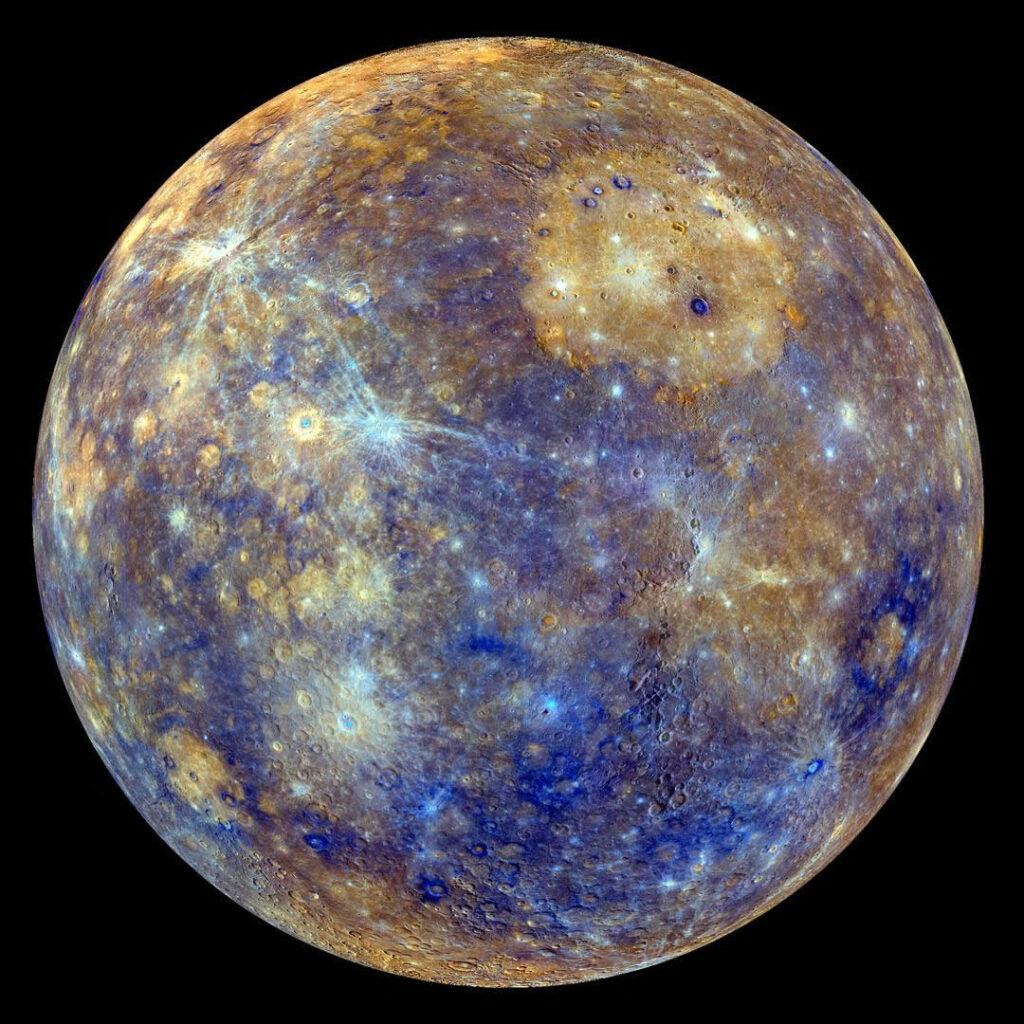Mercury

Both the Moon and Mercury are airless, virtually unchanging worlds that experience extremes in temperature. Mercury has no permanent atmosphere, although it does have a thin envelope of gas temporarily trapped from the solar wind.
The main surface features on the Moon are the dark maria and the lighter-colored highlands. The surfaces of both the Moon and Mercury are covered with craters of all sizes, caused by impacting meteoroids. Meteoritic impacts are the main source of erosion on the surfaces of both worlds. The lunar highlands are older than the maria and are much more heavily cratered. The rate at which craters are formed decreases rapidly with increasing crater size.
The high day-side temperatures and cold night-side temperatures on the Moon and Mercury result from the absence of significant heat conduction or atmospheric blanketing on the planet. Sunlight strikes the polar regions of both the Moon and Mercury at such an oblique angle that temperatures there are very low, with the result that both bodies may have amounts of water ice near the poles.
The tidal interaction between Earth and the Moon is responsible for the Moon’s synchronous orbit, in which the same side of the Moon always faces our planet. The large lunar equatorial bulge probably indicates that the Moon once rotated more rapidly and orbited closer to Earth. Mercury’s rotation rate is strongly influenced by the tidal effect of the Sun. Because of Mercury’s eccentric orbit, the planet rotates not synchronously but exactly three times for every two orbits around the Sun. The condition in which a body’s rotation rate is simply related to its orbit period around some other body is known as a spin-orbit resonance.